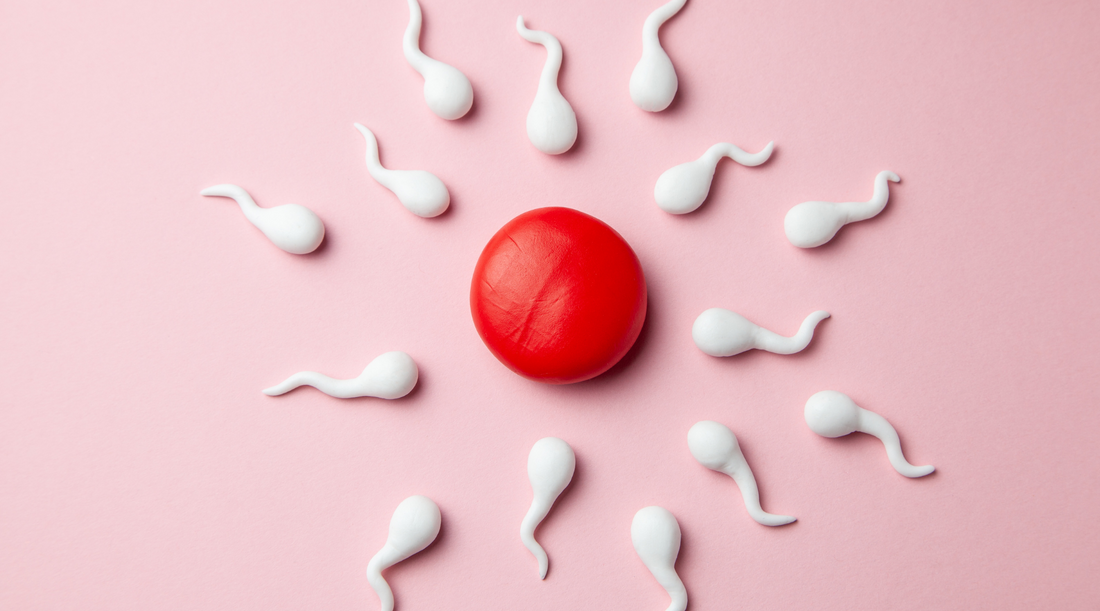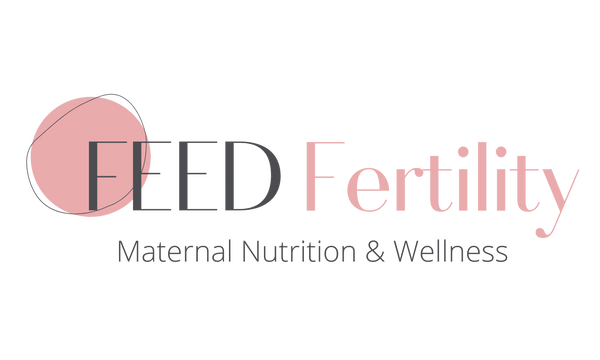
The Fertility Awareness Method
What is The Fertility Awareness Method?
The Fertility Awareness Method, (or ‘FAM’ for short), is a natural family planning strategy that can be used to either help prevent pregnancy or help couples conceive when the time comes to start a family.
FAM involves developing an acute awareness of day-to-day changes in our body, including (but not limited to) tracking your menstrual cycle and paying attention to the signs of ovulation. Success greatly depends on having the time and discipline to check your fertility signs and charting your cycle every day. It can also be helpful to have a professional help you interpret the data, like a doctor, nurse, or fertility support practitioner.
When speaking about the ‘Fertility Awareness Method’, we really could say ‘methods’, as there are three main methods – or factors to track – which can help determine your fertile window and predict when ovulation will occur. These are Basal Body Temperature, Cervical Mucus, and Cervical Position. Tracking all three together will give you the best picture of your fertility and makes FAMs most accurate. We’ll go through them in more detail, one by one.
Basal Body Temperature (BBT)
Basal Body Temperature is the baseline temperature reading you would get first thing in the morning, before you get out of bed, talk or even sit up. A rise in body temperature tends to happen 24-36 hours after ovulation. This happens because our BBT changes throughout our cycle in response to fluctuations in our hormone levels. During the first half of your cycle before ovulation, (your follicular phase), estrogen dominates, and your BBT will be lower. During the second half after ovulation, (your luteal phase), there's a surge in progesterone, which increases your body temperature as it gets your uterus ready for a fertilized, implantable egg.
So how does this help with fertility? Testing your temperature each morning throughout your cycle can help you to identify your fertility window – the days of the month you are most likely to conceive if you have unprotected sex. Tracking your BBT changes for a few months (2 months minimum), will help you to see a pattern in your cycles, enabling you to predict when your fertile days are – which can vary from one woman to the next.
One thing to keep in mind about BBT as a FAM is that readings are not always 100% accurate. Factors such as illness, and certain drugs and alcohol can all affect BBT reading. That’s why having a few months of data, and tracking additional factors (like diet, medication, etc…) alongside BBT can be very useful to see the big picture.

Cervical Fluid
The most accurate part of determining ovulation seems to be tracking cervical fluid, both in terms of quantity and quality (or consistency). Cervical fluid plays a crucial role in the matchmaking game of sperm meets egg. It helps sperm to make the trip up the vagina, into the uterus, and fallopian tubes to meet that one lucky egg.
Quantity is important in that low levels of cervical fluid could indicate problems with hormonal balance, ovulation or just that sperm may have difficulty reaching the egg. Quality is equally important in that it helps to nourish sperm cells and increase their chance of surviving long enough to find the egg. The quantity of fluid can vary from none (dry) to very wet. Consistency can vary from sticky to creamy, to watery, or egg-white (in order from least fertile to most fertile.)
- Sticky: A sticky consistency generally indicates low fertility levels and typically occurs during the second half of your cycle, or in the days immediately following your period.
- Creamy: Smooth and creamy (think body lotion consistency) tends to occur in the days leading up to our fertile days (like a ‘head’s up’ that fertility is just around the corner).
- “Egg White”: A slippery, stretchy, and translucent consistency (think raw egg white) is a sign that our body is at its most fertile window. If you were to try and stretch it between your fingers, you'd be able to pull it into a string an inch or two long before it broke. This mucus occurs a few days leading up to and the day of ovulation, so if you see it, grab your partner and get busy!
If you are using the Fertility Awareness Method to track the quantity and quality of cervical fluid each day of your cycle, remember, the highest quantity + highest quality (egg-white consistency) = most fertile window. It should also be noted that some external factors can influence cervical fluid levels, such as water intake, smoking, caffeine, alcohol, and stress. It is advisable to stay hydrated while keeping the other variables to a minimum.

Cervical Positioning
The position of the cervix is another factor that can help identify when ovulation will occur. The cervix is generally low, hard, and closed throughout the start of a cycle. However, as ovulation approaches, it rises, becomes softer, and widens slightly. This allows sperm to pass through on their journey to meet the egg.
You should be able to feel this with our fingers, and also during intercourse as your comfort level may change in certain positions throughout the month. To use this FAM, check your cervix every day and keep track of what you observe. To find your cervix and feel its position;
- Lift one leg onto the toilet seat or side of the tub.
- With your palm facing up, guide your longest finger carefully into your vagina.
- Feel for a round, raised circle with a dimple in the middle — it’s most likely to be at the top of the front vaginal wall (closer to your belly button than to your back).
What Else Can I Track?
As previously mentioned, BBT, Cervical Fluid, and Cervical Position are the three main methods for tracking your fertility potential. However, that does not mean you cannot go beyond this. In fact, I encourage adding multiple data points.
Expanding your data points can not only help you see the forest for the trees, but it can also be a useful tool for a health practitioner, like your family doctor or OBGYN, to spot connections and possibly make a diagnosis. What you choose to track is a personal choice, but here are a few ideas to consider:
- Fluctuations in sex drive
- Changes in mood
- Any pain/discomfort in the lower abdomen
- Energy level highs and lows
- Sleep quantity & quality
- Results of an Ovulation Predictor Kit (OPKs)
- Stress levels
- Digestive upset: bloating, gas, etc…
- PMS symptoms: Cramps, tender breasts, breakouts, etc…
- Etc…

How Do I Keep Track of My Data?
Now that you know WHAT to track, let’s talk about HOW. Lucky for you there are many options, and the best method will be the one that works for you.
Living in a technological age, there are a plethora of Period & Ovulation Tracker apps out there that can be great tools for daily data capture. The three I most commonly recommend to clients are Clue, Ovia, and Flo. All are well rated and have many data points you can capture. Each does, however, come with some limitations for customization.
Another option is to use a FAM Cycle Chart – a spreadsheet document (like google sheets or microsoft excel doc) – which you can completely customize to your needs. While this method may not be as fancy as an app, it allows you to track symptoms and other factors that apps may not necessarily capture and see the results in one forest-for-the-trees snapshot. When I work with fertility clients, I always advise them to use a Cycle Chart.
A final option is to simply combine the two. The App + Chart method can give you the best of both worlds. Capture your daily data on your phone using an app, and then transfer the data periodically (I suggest once per week) to your cycle chart. I personally prefer this method for myself and have received positive feedback from clients.
What Do I Do With All The Data?
That’s the fun part! Once you have a few months of data collected, you can start to use that data to optimize your fertility. For one, you yourself will start to see patterns in the data that can help you better understand the rhythms of your unique body, and help plan for when to have intercourse. For example, through charting your BBT, cervical fluid, and position you may discover that you have a shorter follicular phase. In which case, it would be better to have intercourse during day 9 of your cycle than the standard day 14.
If you choose to seek guidance from a health practitioner (like your family doctor or OBGYN) or fertility support practitioner, another big advantage of FAMs, (especially if you are tracking using a cycle chart), is that they can save time and possibly make a diagnosis by a doctor easier. Having months of documented data can help answer questions, which could make it easier for them to create a strategic plan for how to move forward with any fertility testing, treatments, and/or other types of fertility support.

FREE RESOURCE
If you are interested in using a Cycle Chart, you can download a free copy of my FAM Cycle Chart Template and amend it to meet your personal fertility needs.
MORE LIKE THIS
Learn all about OPKs and how they can support your fertility journey in Ovulation Predictor Kits: Are They Worth It?
ABOUT THE AUTHOR
Ewa Reid is a Registered Holistic Nutritionist, certifying Fertility Support Practitioner, nutrition & fertility educator, wife, and mother. You can learn more about Ewa on our About page.
